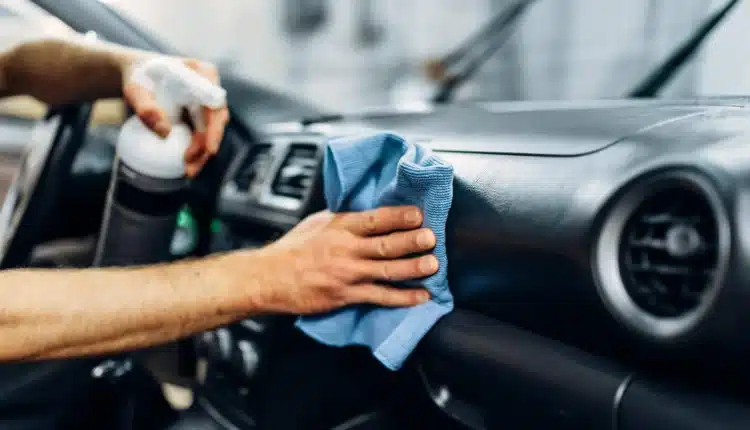How to make leather soft again?
Leather Care Products is a classic and luxurious material that adds elegance and durability to everything from sofas and jackets to handbags and car interiors. However, over time, leather can lose its natural softness, becoming stiff, dry, or even cracked due to neglect, exposure, or aging.
But here’s the good news—you can bring your leather back to life. With the right care and conditioning, you can restore its suppleness and prolong its life for years to come.In this expert guide from Leather Care Products, we’ll show you step-by-step how to soften leather safely and effectively, whether you’re treating a vintage handbag or your favorite pair of boots.
Leather Gets Hard or Stiff
Before diving into the softening process, it’s important to understand what causes leather to lose its flexibility. Knowing the “why” helps you avoid repeating the same mistakes.
Common Reasons Leather Becomes Stiff
Lack of Moisture Leather needs regular conditioning. Without it, the natural oils evaporate, leaving it dry and brittle.
Environmental Stress Prolonged exposure to heat, sunlight, and humidity can speed up the drying process.
Improper Storage Folding or storing leather in damp or overly dry conditions leads to loss of shape and flexibility.
Water Damage Unless it’s waterproofed, leather reacts poorly to water, which can cause stiffness.
Natural Aging Even high-quality leather becomes less pliable with time if not maintained properly.
Step-by-Step Guide to Soften Leather
Let’s go through the proven techniques to bring back your leather’s softness.
Clean the Leather Surface
Start by giving your leather item a proper cleaning to remove any dirt, oils, or grime that might block the conditioner from penetrating.
What You’ll Need
Soft microfiber cloth
Leather cleaner (or a mix of mild soap and water)
How to Clean
Wipe the leather with a dry cloth to remove surface dust.
Lightly dampen another cloth with cleaner or soapy water.
Gently rub the surface using circular motions.
Let the item air dry—avoid direct sunlight and heat sources.
Select the Right Leather Conditioner
Conditioning is the most crucial part of softening leather. It helps replenish the oils and restore flexibility.
Here’s a quick comparison table to help you choose the right product:
| Conditioner Type | Benefits | Best For | Notes |
| Mink Oil | Deep nourishment and softness | Boots, saddles, jackets | May darken light-colored leather |
| Lanolin-Based Creams | Restores shine and smoothness | Jackets, handbags | Gentle on delicate leather |
| Neatsfoot Oil | Deep penetration, long tradition | Saddlery, belts | Can damage stitching over time |
| Coconut Oil | Natural and accessible | General use | Use sparingly—can spoil if stored poorly |
| Commercial Conditioners | Balanced and lab-tested | All leather types | Choose silicone-free and pH-balanced |
At AskFormulator, we always recommend doing a spot test on an inconspicuous area to check for discoloration or unexpected reactions.
Apply the Conditioner the Right Way
Once you’ve selected the appropriate conditioner:
Use a clean, lint-free cloth.
Apply a small amount of the product and rub it into the leather using circular motions.
Allow it to soak in for several hours or overnight.
Wipe off any residue with a dry cloth.
For best results, repeat this every 2–3 months or whenever the leather feels dry.
Use Heat with Caution (Optional)
Applying gentle heat can enhance conditioner absorption, especially on thicker leather items.
How to Do It Safely
Use a hairdryer on the lowest setting.
Hold it 6 inches away from the surface.
Keep it moving constantly to avoid overheating one spot.
This technique works well on boots and saddles but should be avoided on delicate leather like wallets or gloves.
Gently Flex the Leather
Leather softens as it moves. After conditioning:
Gently bend or massage the material to encourage flexibility.
Wear leather garments (like jackets or shoes) briefly to help them regain shape.
Avoid rough handling or sharp creases.
Store Your Leather Properly
Proper storage is essential to maintain the softness you’ve restored.
Keep leather in a cool, dry environment.
Use breathable bags (like cotton or canvas).
Store away from direct sunlight and heat sources.
Use plastic bags (they trap moisture and promote mold).
Stack or fold leather under heavy objects.
Quick DIY Leather Softener Recipe
Ingredients
part white vinegar
parts linseed oil
Instructions
Mix well in a small bottle.
Apply a thin layer to the leather using a soft cloth.
Let it sit overnight.
Buff with a clean cloth the next day.
Always test on a small hidden area first to avoid surprises.
Mistakes to Avoid When Softening Leather
Using petroleum jelly It may feel soft at first but can clog pores and attract dust.
Over-conditioning Too much oil can make leather sticky or overly soft.
Using harsh cleaners Household cleaners can strip leather of essential oils.
Ignoring mold or mildew Musty smells or spots must be treated before softening.
Expert Insight from AskFormulator
“Think of leather like skin—it needs hydration, gentle treatment, and regular care to stay youthful and supple.”
— AskFormulator Leather Care Team
When to Call a Professional
If your leather is antique, high-value, or severely damaged, DIY methods may not be enough. In such cases, seek help from a professional leather technician who has the tools and experience to handle complex restoration without causing further damage.
Conclusion
Leather care is about consistency, not complexity. With a little attention and the right products, you can keep your leather goods soft, flexible, and beautiful for years. From jackets and bags to car seats and boots, the techniques shared here by AskFormulator will help you revive your favorite leather items and protect your investment.


